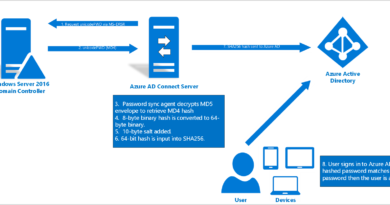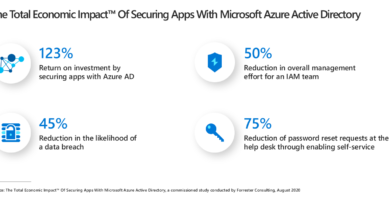Guarding against supply chain attacks—Part 2: Hardware risks
The challenge and benefit of technology today is that it’s entirely global in nature. This reality is brought into focus when companies assess their supply chains, and look for ways to identify, assess, and manage risks across the supply chain of an enterprise. Part 2 of the “Guarding against supply chain attacks” blog series examines the hardware supply chain, its vulnerabilities, how you can protect yourself, and Microsoft’s role in reducing hardware-based attacks.
Unpacking the hardware supply chain
A labyrinth of companies produces mobile phones, Internet of Things (IoT) devices, servers, and other technology products that improve our lives. Product designers outsource manufacturing to one or more vendors. The manufacturer buys components from known suppliers. Each supplier buys parts from its preferred vendors. Other organizations integrate firmware. During peak production cycles, a vendor may subcontract to another company or substitute its known parts supplier with a less familiar one. This results in a complex web of interdependent companies who aren’t always aware that they are connected.
Tampering with hardware using interdiction and seeding
Tampering with hardware is not an easy path for attackers, but because of the significant risks that arise out of a successful compromise, it’s an important risk to track. Bad actors compromise hardware by inserting physical implants into a product component or by modifying firmware. Often these manipulations create a “back door” connection between the device and external computers that the attacker controls. Once the device reaches its final destination, adversaries use the back door to gain further access or exfiltrate data.
But first they must get their hands on the hardware. Unlike software attacks, tampering with hardware requires physical contact with the component or device.
So how do they do it? There are two known methods: interdiction and seeding. In interdiction, saboteurs intercept the hardware while it’s on route to the next factory in the production line. They unpackage and modify the hardware in a secure location. Then they repackage it and get it back in transit to the final location. They need to move quickly, as delays in shipping may trigger red flags.
As hard as interdiction is, it’s not nearly as challenging as seeding. Seeding attacks involve the manipulation of the hardware on the factory floor. To infiltrate a target factory, attackers may pose as government officials or resort to old fashioned bribery or threats to convince an insider to act, or to allow the attacker direct access to the hardware.
Why attack hardware?
Given how difficult hardware manipulation is, you may wonder why an attacker would take this approach. The short answer is that the payoff is huge. Once the hardware is successfully modified, it is extremely difficult to detect and fix, giving the perpetrator long-term access.
- Hardware makes a good hiding place. Implants are tiny and can be attached to chips, slipped between layers of fiberglass, and designed to look like legitimate components, among other surreptitious approaches. Firmware exists outside the operating system code. Both methods are extremely difficult to detect because they bypass traditional software-based security detection tools.
- Hardware attacks are more complex to investigate. Attackers who target hardware typically manipulate a handful of components or devices, not an entire batch. This means that unusual device activity may resemble an anomaly rather than a malicious act. The complexity of the supply chain itself also resists easy investigation. With multiple players, some of whom are subcontracted by vendors, discovering what happened and how can be elusive.
- Hardware issues are expensive to resolve. Fixing compromised hardware often requires complete replacement of the infected servers and devices. Firmware vulnerabilities often persist even after an OS reinstall or a hard drive replacement. Physical replacement cycles and budgets can’t typically accommodate acceleration of such spending if the hardware tampering is widespread.
For more insight into why supply chains are vulnerable, how some attacks have been executed, and why they are so hard to detect, we recommend watching Andrew “bunny” Huang’s presentation, Supply Chain Security: If I were a Nation State…, at BlueHat IL, 2019.
Know your hardware supply chain
What can you do to limit the risk to your hardware supply chain? First: identify all the players, and ask important questions:
- Where do your vendors buy parts?
- Who integrates the components that your vendor buys and who manufactures the parts?
- Who do your vendors hire when they are overloaded?
Once you know who all the vendors are in your supply chain, ensure they have security built into their manufacturing and shipping processes. The National Institute of Standards and Technology (NIST) recommends that organizations “identify those systems/components that are most vulnerable and will cause the greatest organizational impact if compromised.” Prioritize resources to address your highest risks. As you vet new vendors, evaluate their security capabilities and practices as well as the security of their suppliers. You may also want to formalize random, in-depth product inspections.
Microsoft’s role securing the hardware supply chain
As a big player in the technology sector, Microsoft engages with its hardware partners to limit the opportunities for malicious actors to compromise hardware.
Here are just a few examples of contributions Microsoft and its partners have made:
- Microsoft researchers defined seven properties of secure connected devices. These properties are a useful tool for evaluating IoT device security.
- The seven properties of secure connected devices informed the development of Azure Sphere, an IoT solution that includes a chip with robust hardware security, a defense-in-depth Linux-based OS, and a cloud security service that monitors devices and responds to emerging threats.
- Secured-core PCs apply the security best practices of isolation and minimal trust to the firmware layer, or the device core, that underpins the Windows operating system.
Project Cerberus is a collaboration that helps protect, detect, and recover from attacks on platform firmware.
Learn more
The “Guarding against supply chain attacks” blog series untangles some of the complexity surrounding supply chain threats and provides concrete actions you can take to better safeguard your organization. Read Part 1: The big picture for an overview of supply chain risks.
Also, download the Seven properties of secure connected devices and read NIST’s Cybersecurity Supply Chain Risk Management.
Stay tuned for these upcoming posts:
- Part 3—Examines ways in which software can become compromised.
- Part 4—Looks at how people and processes can expose companies to risk.
- Part 5—Summarizes our advice with a look to the future.
In the meantime, bookmark the Security blog to keep up with our expert coverage on security matters. Also, follow us at @MSFTSecurity for the latest news and updates on cybersecurity.
READ MORE HERE





